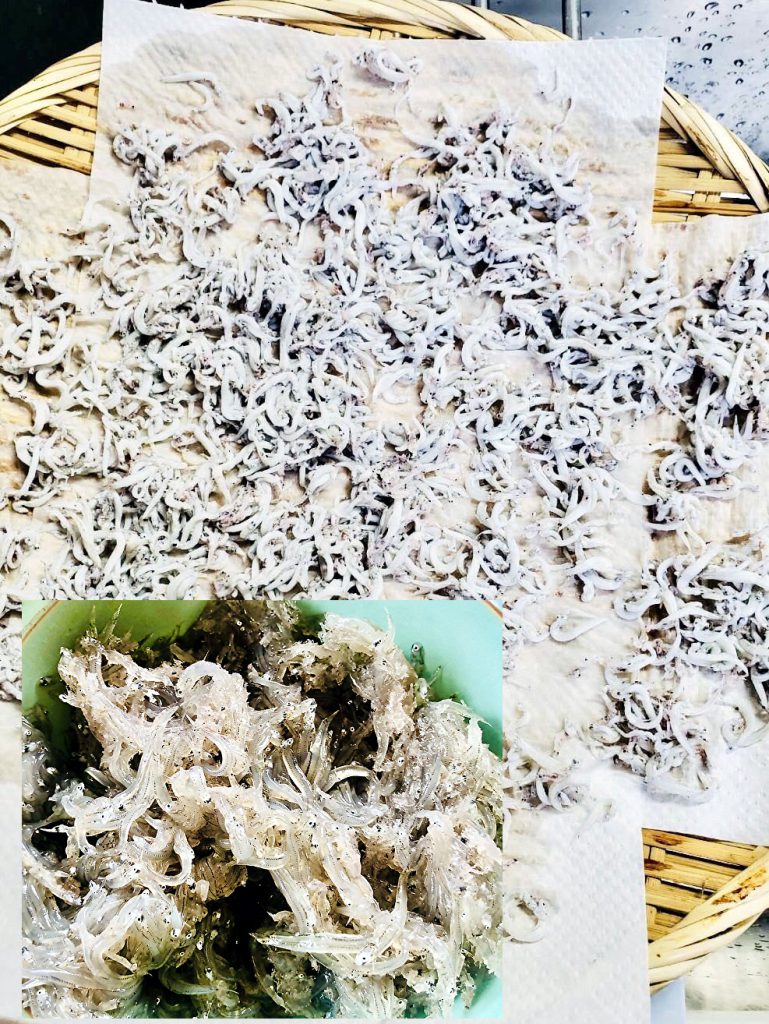
Personally, the best way to eat shirasu is to dip it in a seasoning such as vinegar and soy sauce and eat it as it is. However, it is also a good idea to sprinkle “shirasu-dried”, which is a semi-dried salted boiled product, on top of rice, or to mix it with grated radish and season it with soy sauce. After the ban is lifted, “Spring Shirasu” is a gem of spring gourmet food. Shirasu refers to fry such as sardines, sand lances, and eels, but the shirasu commonly found in the market tends to be fry such as sardines and anchovy. Foods rich in protein and calcium that are softly dried are called “shirasu-dried” (Kanto-dried), and those that are dried until they become firm are called “chirimen” or “chirimen-jako” (kansai-dried). is. Recently, from the viewpoint of protecting marine resources, there are many places where a fishing ban period is set every year from January to mid-March. Even so, the current situation is that the catch is steadily decreasing, and Shirasu cuisine is no longer a high-class dish.
個人的には、生きたままのシラスを酢醤油など調味料にくぐらせ、そのまま食べる「踊り食い」がいちばんです。しかし、塩茹でを半乾燥品とした「しらす干し」をご飯の上に振りかけたり、大根おろしと和えて醤油で味付けしたりして食べるのも乙な物。解禁明けの「春シラス」は春のグルメの逸品です。シラスは、イワシやイカナゴ、ウナギなどの稚魚のことを指しますが、一般的に市場で見かけるシラスはマイワシやカタクチイワシなど稚魚であることが多い傾向です。タンパク質やカルシウムが豊富な食品で、やわらかめに乾燥されたのものを「しらす干し」(関東干し)、固めになるまで乾燥させたものを「ちりめん」または「ちりめんじゃこ」(関西干し)と呼んでいます。最近は、海洋資源の保護の観点から毎年1~3月中旬ごろに禁漁期間が設けられている場所も多いです。それでも漁獲量がどんどん減っているのが現状で、シラス料理はもはや高級料理になっています。
